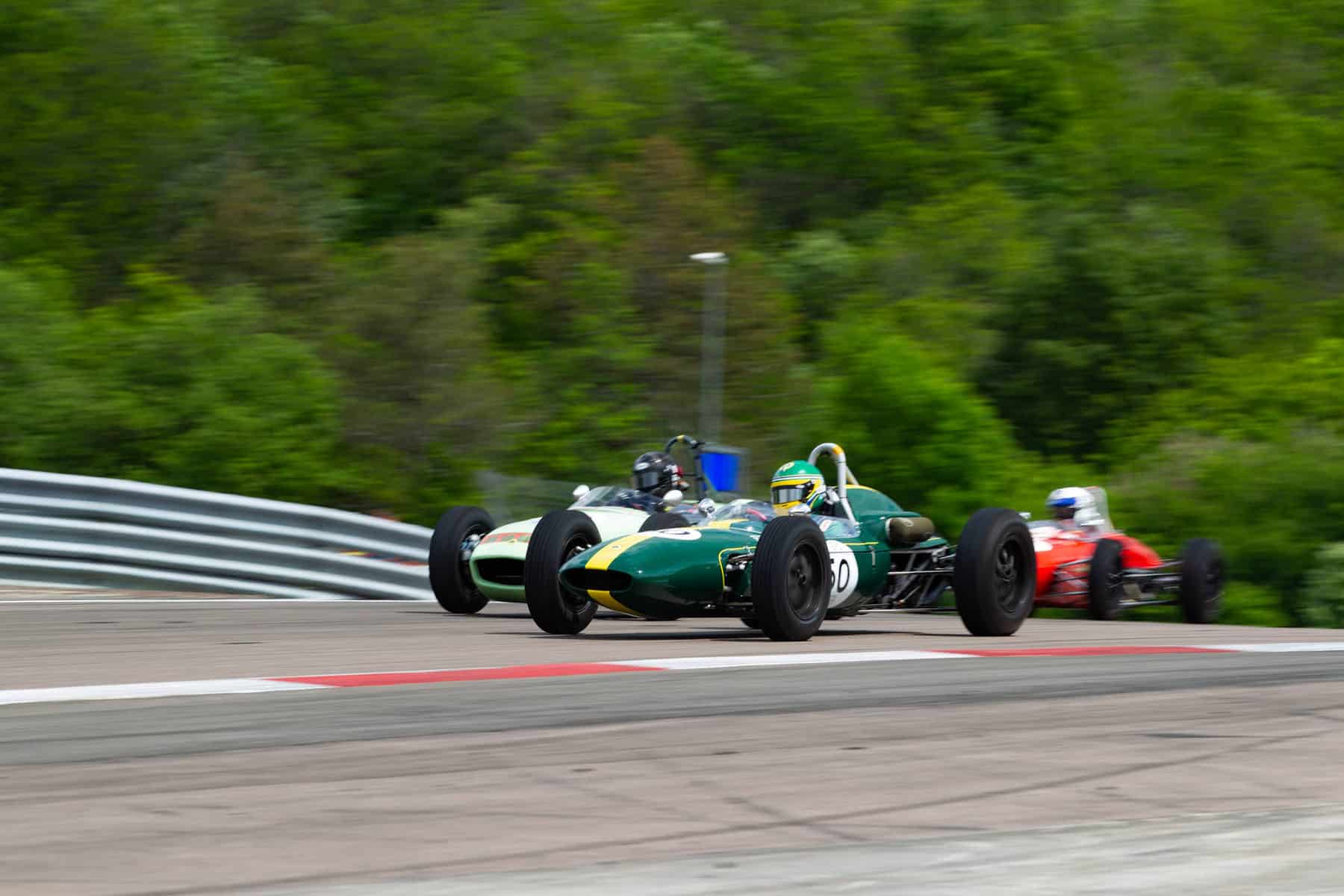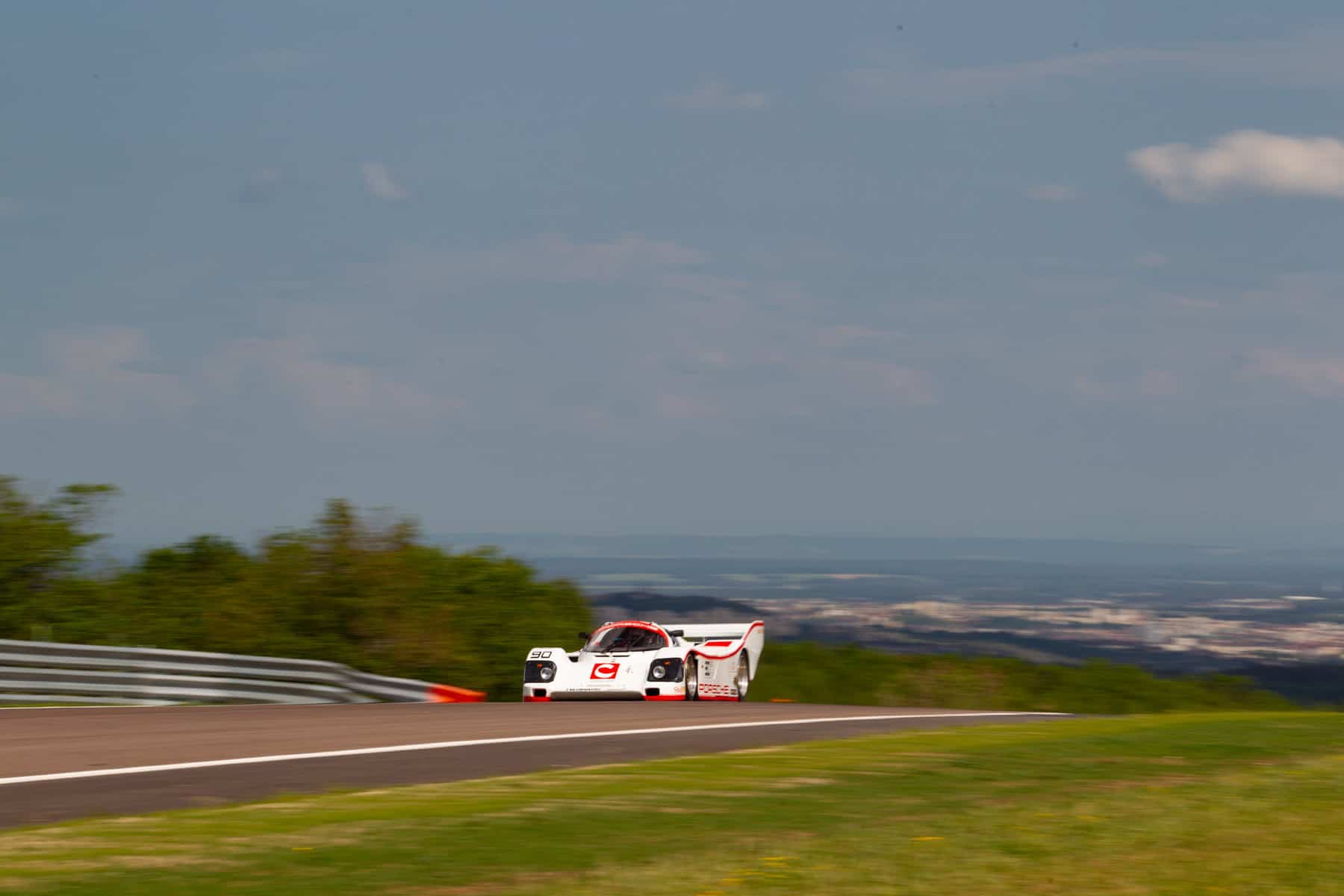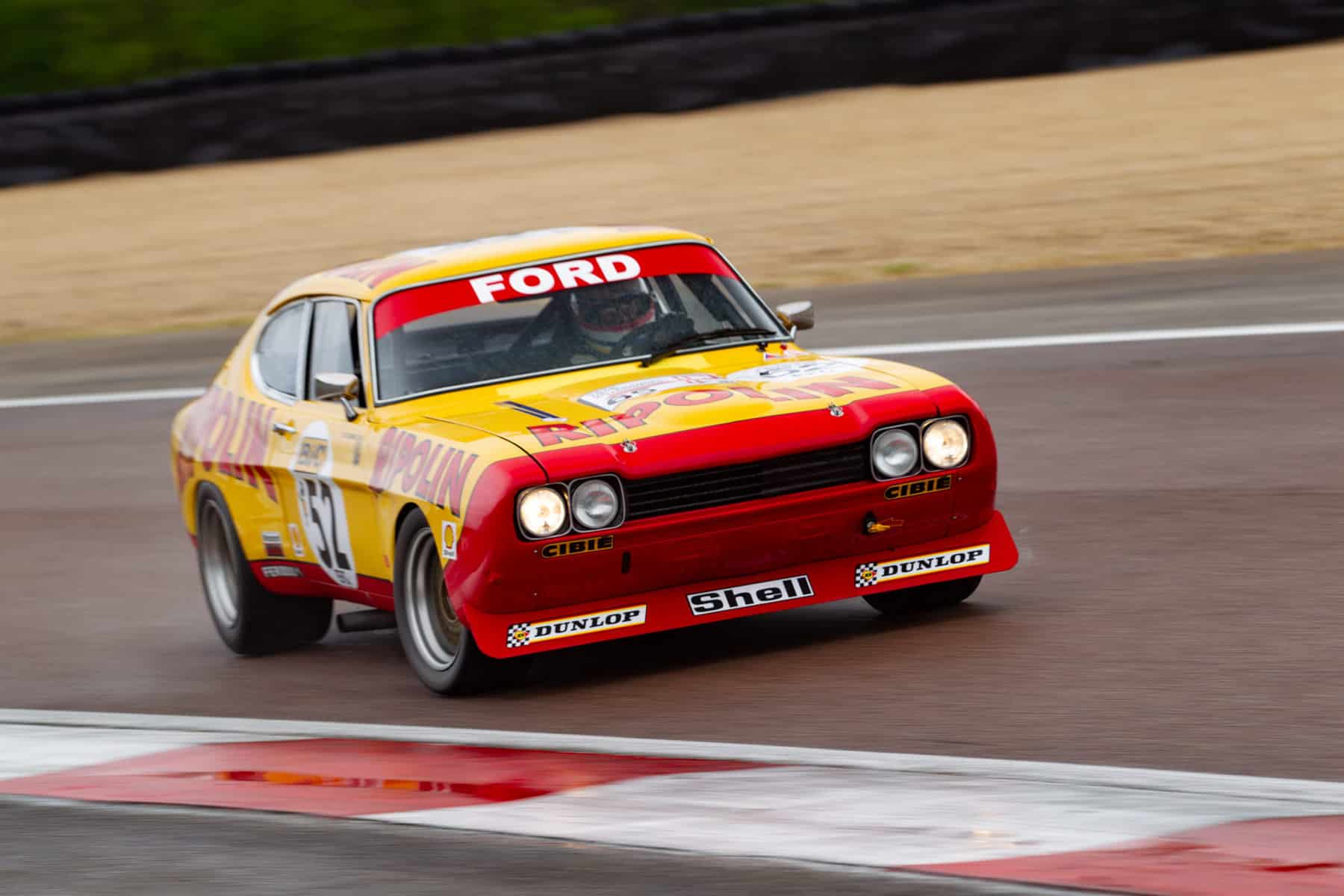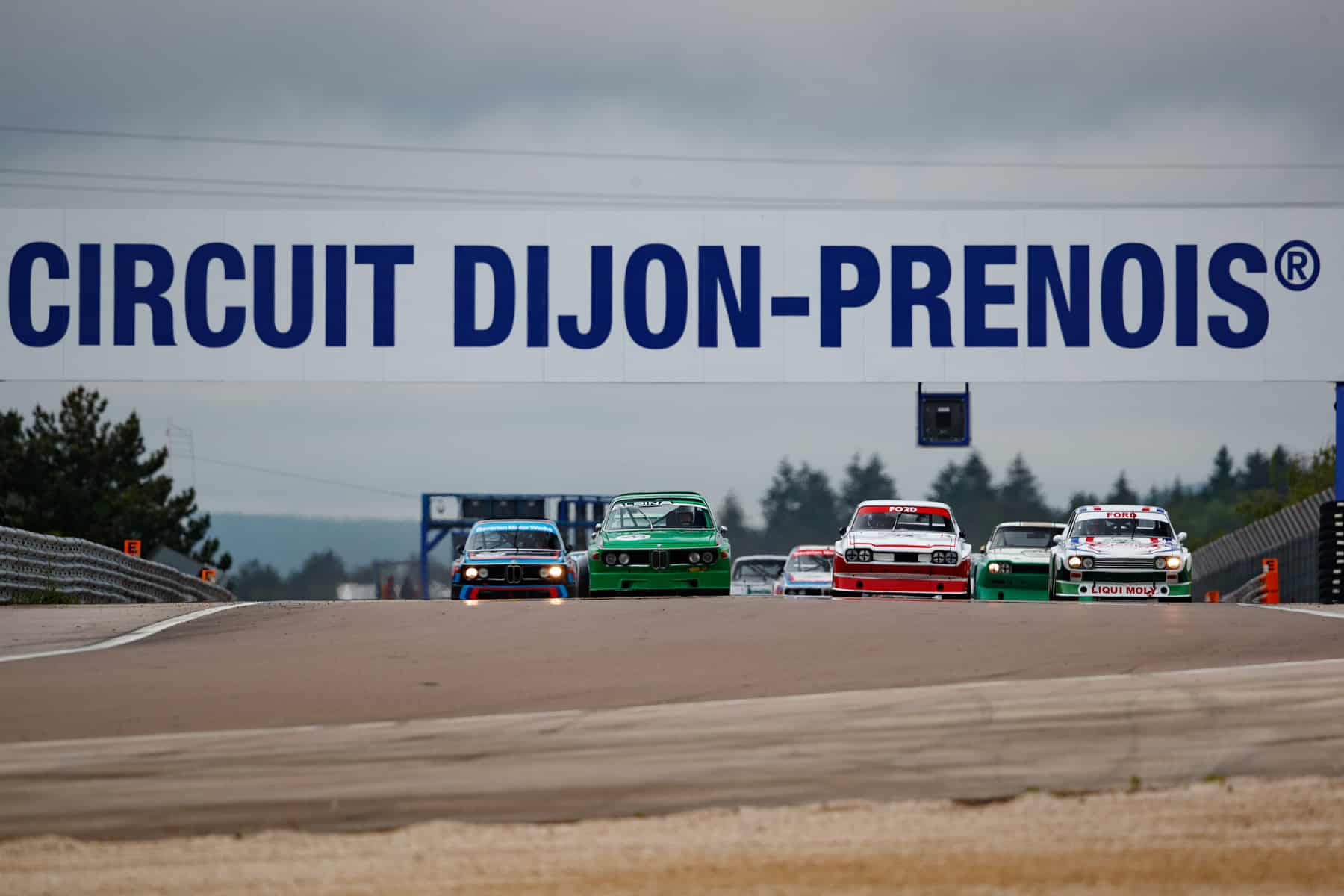2021 Grand Prix de l'Age d'Or
“Trophies of the Golden Age" returns
BY: WOUTER MELISSEN
“In 1964, Les Coupes de l’Age d’Or (The Trophies of the Golden Age) were created in France at the now long gone Rouen-les-Essarts Circuit,” explains Patrick Peter, host of the current event.
“It was a large gathering of vintage competition cars which took place at the opening of the French Grand Prix.” Known as the Grand Prix de l’Age d’Or from 1980 onwards, the event grew to become one of the pioneering historic race meetings. Cancelled in 2020, it was organized for the fifty-sixth time in 2021.
The original event was the brainchild of two French enthusiasts, Serge Pozzoli and Jacques Potherat. It was an immediate success and in 1968 moved to find a permanent home as an independent event at the Autodrome de Linas-Montlhéry to the southwest of Paris. This high-speed circuit had a banked section, under which Pozzoli also housed his formidable collection of classic cars. He had a taste for the peculiar and also wrote about these cars in his own magazine and later for Auto Passion. By 1973, his collection had grown to 250 cars, making him one of the major collectors in the world. In the early 1980s, Peter Auto took over the event organization. It was the first automotive event for the Patrick Peter organization, who have since launched events like the Tour Auto retrospective and Le Mans Classic. By the end of the decade, the Grand Prix de l’Age d’Or was the leading historic racing event in mainland Europe, together with the Old-timer Grand Prix at the Nürburgring.
In 1993, a new organization took over from Peter Auto and the event carried on at Montlhéry until 2004, when the aging track’s license finally expired. Peter explains: “the Autodrome de Linas-Montlhéry lost its racing homologation and the event moved to the region of Bourgogne-Franche-Comté on the Circuit de Dijon-Prenois, where it is still staged.” Ten years later Peter Auto took up the organization of the event once more. “The Grand Prix de l’Age d’Or has a special place in the history of Peter Auto, because this is the event with which we started motorsport in the 1980s.” Peter continues: “Of course, today bigger events around classic cars exist in France and abroad but for us – and for many other classic cars lovers – it is the event that started it all.”
The undulating Circuit Dijon-Prenois is best known for the epic fight between René Arnoux and Gilles Villeneuve during the 1979 French Grand Prix. For Grand Prix de l’Age d’Or competitor Maxime Guenat, it is also a special place: “It is the track where I first drove a racing car and it is also where my team Equipe Europe is doing the pre-season testing every year.” He continues: “The track itself is quite something to do. The elevation and the fact that you pretty much only have high-speed corners give it a roller coaster–like feel. Racing on this track is challenging because most of the time you are dealing with the limit of the car due to the speed you can carry through the whole lap.”
What Peter Auto brought to the table when he took the helm of the Grand Prix de l’Age d’Or for a second time was a full set of race grids that already competed at events like the Spa Classic and the Dix Mille Tours. Among them was the Classic Endurance Racing or CER grid that initially served as a support event for the European Le Mans Series races. The CER initially covered the broad period of sports car racing from 1966 through to 1981. When the grid became part of standalone events, it was split in two with the cut-off for year CER1 set at 1972 for sports prototypes and 1975 for GTs. Both the CER1 and CER2 races run for a full hour and include a mandatory pit stop.
Another set fixture from the start has been the Sixties’ Endurance for sports cars from a slightly earlier era. Traditionally scheduled for Saturday evenings, this is a true endurance race as it lasts 120 minutes and includes a mandatory pit stop where refueling is allowed. It is traditionally the biggest field and at Dijon the grid was oversubscribed despite the travel restrictions that were still in effect. Cars eligible for the Sixties’ race were GT cars of up to 1965 and sports prototypes of a slightly earlier vintage. The field consisted of a wide variety of machinery that included Jaguar E-Types, Lotus Elevens, and Morgan +4 Super Sports but it is generally accepted that for the overall victory the AC Shelby Cobra is the weapon of choice. Entered for the Grand Prix de l’Age d’Or were a colorful mix of the Ford V8-engined machine, which also included several Daytona Coupe–bodied examples.
Maxime Guenat was also entered in the Sixties’ Endurance with an Equipe Europe–prepared Cobra that he shared with Guillaume Mahe. “If you had told me that we would win the Sixties’ race before it happened, I would have laughed at you!” He recalls: “During the qualifying session we were fifth overall before the wheel nuts on the front left wheel broke so we had to retire. The track continued to improve during the session. So we started tenth.” Starting on pole position was his co-driver Guillaume, who also shared a Daytona-bodied Cobra in the race with his father Yvan. It was a very close start of the race with several “Full Course Yellow” (FCY) interruptions that mandated the drivers to drive at 80 km/h while the track was cleared. Maxime describes the start of his race: “The first laps of the race, trying to make my way across the field, were really hot. Then I had quite a gap to close with the leaders and the FCY’s come! I stayed at 80 km/h on track, which is what we have to do, but little by little I was gaining on the leaders.”
With a field this large at a relatively short track, the fastest cars did not only have to consider their direct competitors but are also faced a constant flow of back-markers. “The traffic is a little bit tricky to manage. Especially when you have more than fifty cars on track!” Guenat explains: “Personally, I always see it as an opportunity to gain time on my opponent.” He managed to do just that and before the pit-window opened, he was fighting with the leading Cobras. “Once I was with them, I knew all I have to do was to bring the car at the driver change in this position and Guillaume will secure the win.” Guenat smiles: “Which is what he did.” Not only did Guillaume Mahe finish first, he also finished second in the Cobra he shared with his father. In fact, with the Pierre-Alain and Erwin France–driven Cobra, it was an all-Equipe Europe podium.
There was little time for Guenat to celebrate as the following morning at 8:30 a.m. sharp, he took part in his second race of the weekend: the CER2. The contrast could hardly be bigger as the Lola T286 he used for this race was powered by a Formula 1–derived Ford Cosworth DFV engine, shod with wide, slick tires and equipped with big wings. Switching between cars that were so different was not as big an issue for Guenat as one might think: “I do drive a lot of different cars during the year. So switching from one to another doesn’t do me a thing. In my opinion, to be fast with a racing car depends on how comfortable you are in the car (seat position, pedals positions, etc.), how comfortable and ‘easy’ the car is to drive and if the setup suits your driving style.” He adds: “With the three cars that I race I have found those things that give me confidence to drive them fast.”
For the CER2 race, Guenat had not qualified on pole either but was on the front next to Yves Scemama in a similarly engined TOJ. He managed to get his Lola ahead of his fellow Swiss before the pit stops and was not challenged for the lead in the remainder of the race, scoring his second win of the weekend. The third car he drove during the weekend was a Ford Capri RS 3100 in the Heritage Touring Cup. This one-hour race for 1970s and 1980s was almost as hotly disputed as the Sixties’ Endurance race. Qualifying had been on a wet track, so the order did not necessarily reflect the possible pace during race day. Guenat started the race in fourth and spent much of the race fighting for the lead with Christophe van Riet, who had started from second in a sister car. Eventually, Guenat managed to get ahead and scored his third win of the weekend. As it turned out, it was a weekend to cherish for preparation company Equipe as their cars scored seven outright wins out of a possible eight.
In keeping with the spirit of Grand Prix racing, there also was a single seater grid on track during the week. Staged by the Historic Grand Prix Cars Association, the two twenty-five-minute races were for monopostos of up to 1966. Both races were won by the skillfully driven Cooper T53 of Will Nuthall. Further highlights on track included a glorious Ferrari 312 P that competed in the CER1 race. Sadly, it refused to start ahead of the race, and could only get going after a few laps. Once it did, the V12-engined machine was fastest of all in the hands of experienced racer Remo Lips, who drove the car on behalf of its Swiss owner. Another evocative and aptly named grid is for the Greatest’s Trophy, which is open to special and valuable cars of the 1950s and early 1960s. Among the cars in this field were a pair of 300S Maseratis and a choice of Ferrari 250 GT SWBs.
While the event was still affected by the global pandemic, there was a sense of optimism during the 2021 Grand Prix de l’Age d’Or, not least due to the fact that spectators were allowed back in for the first time since the start of the pandemic. For the remainder of the season, four more Peter Auto events are scheduled at tracks that include the Le Mans Bugatti circuit, Vallelunga, and Estoril.











